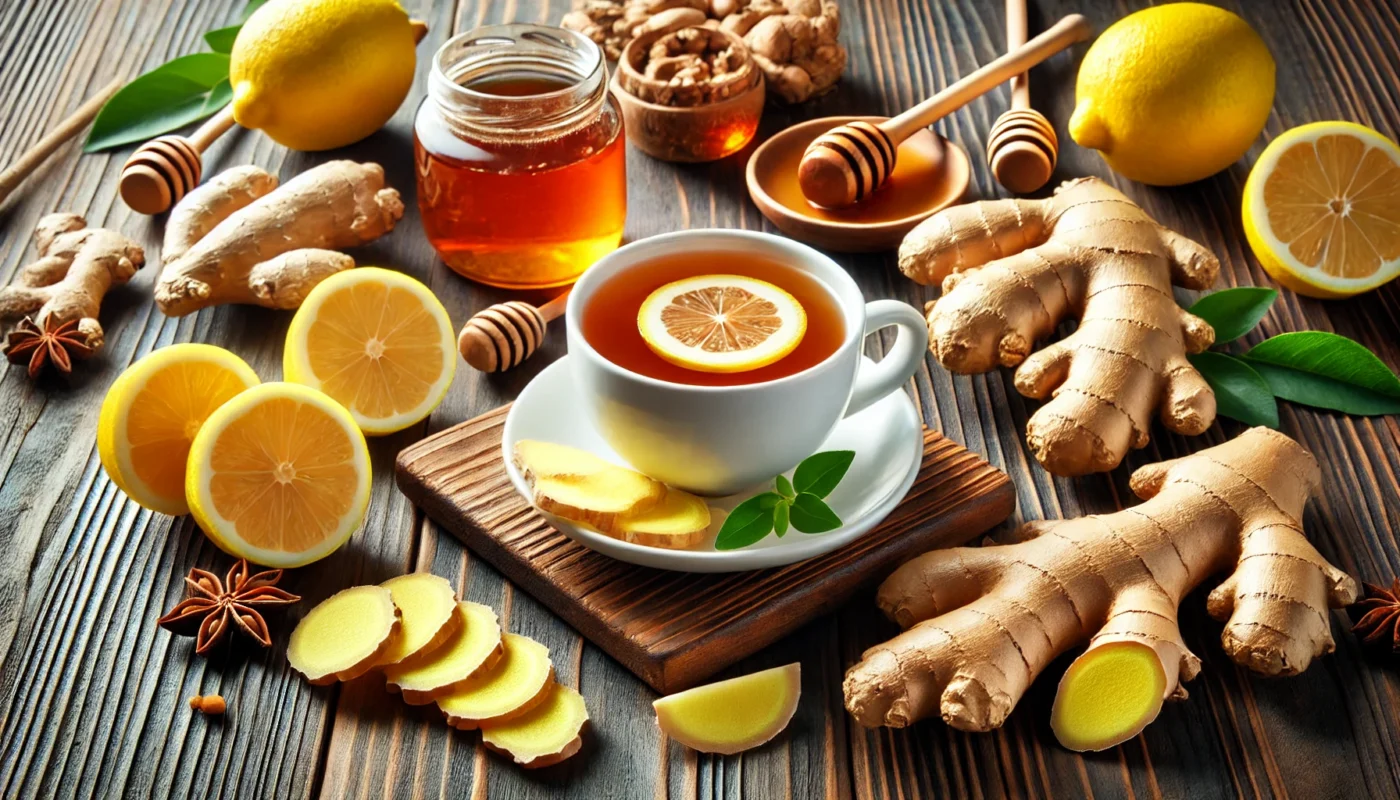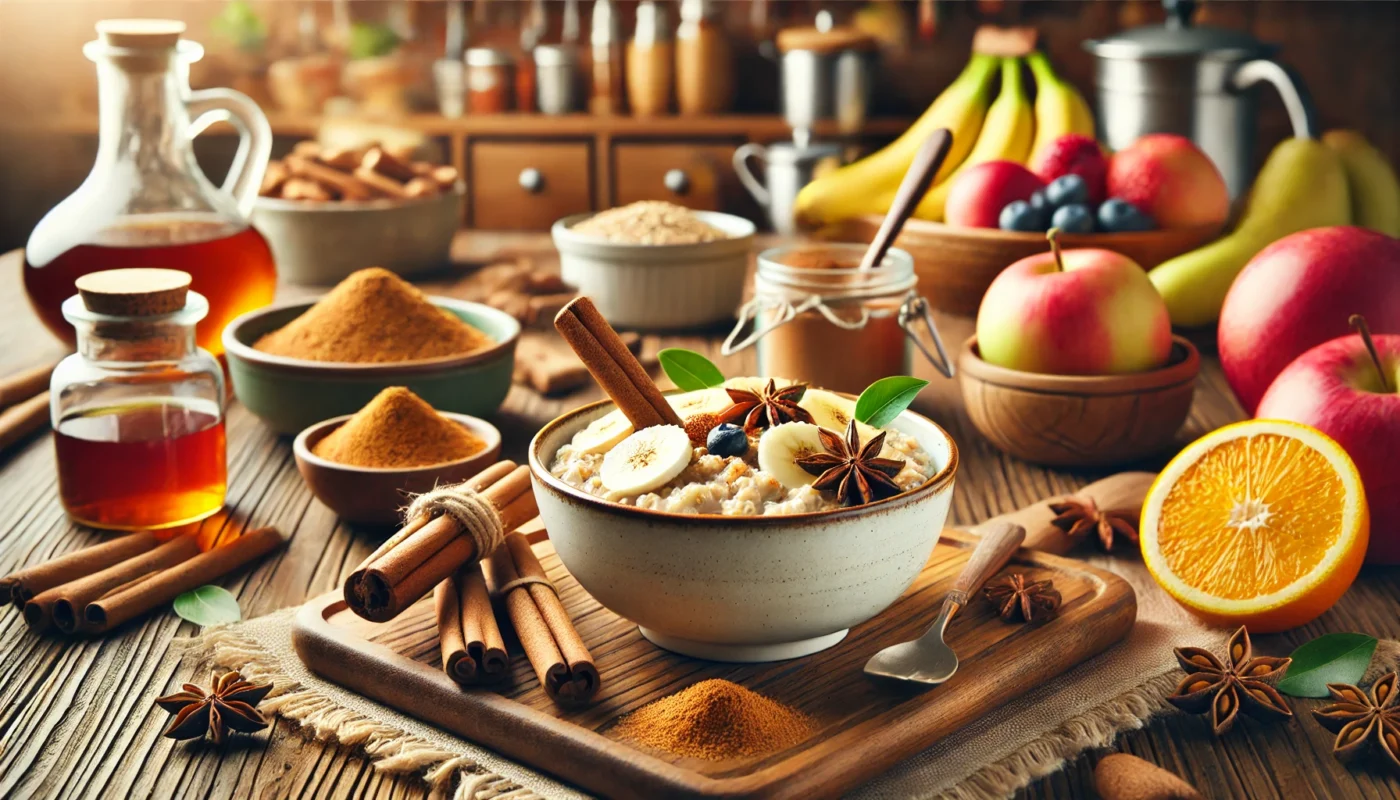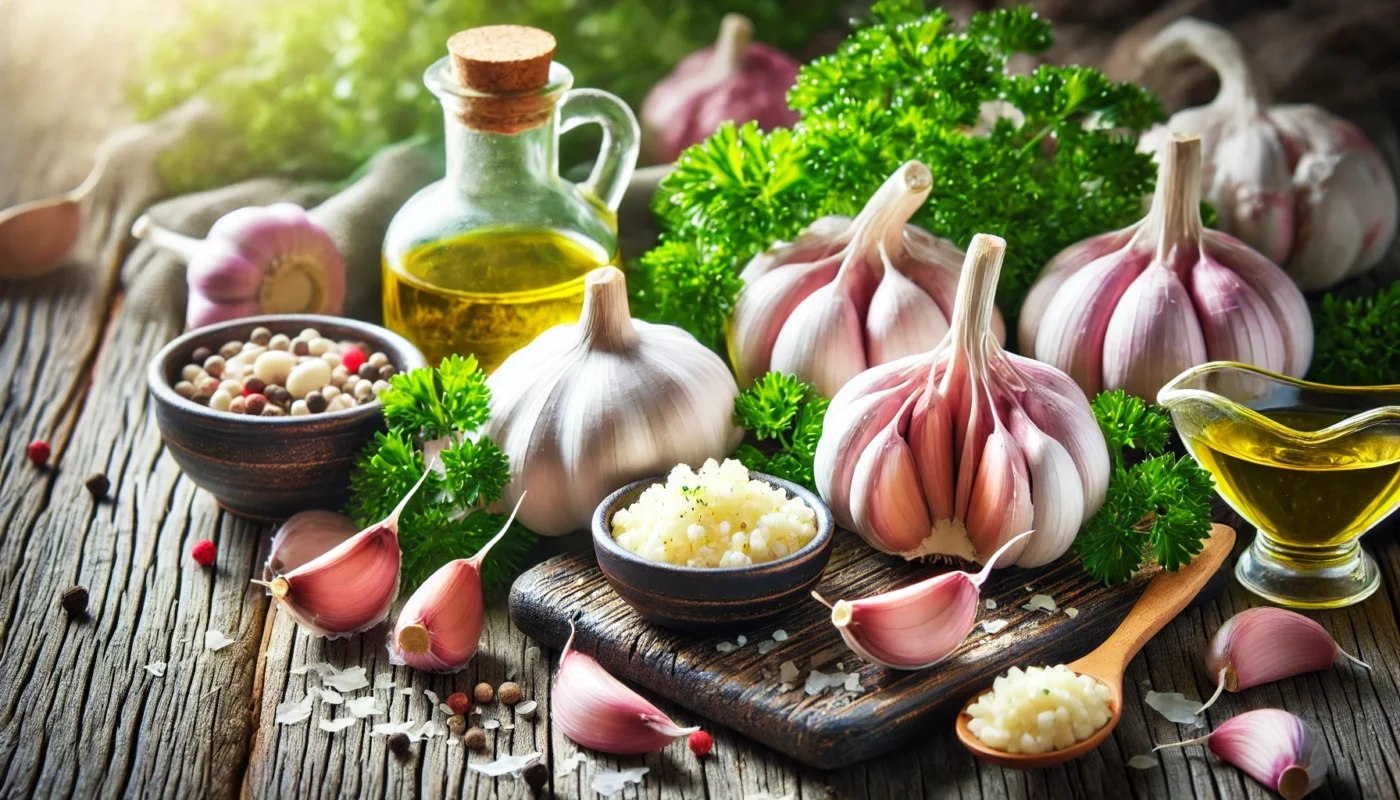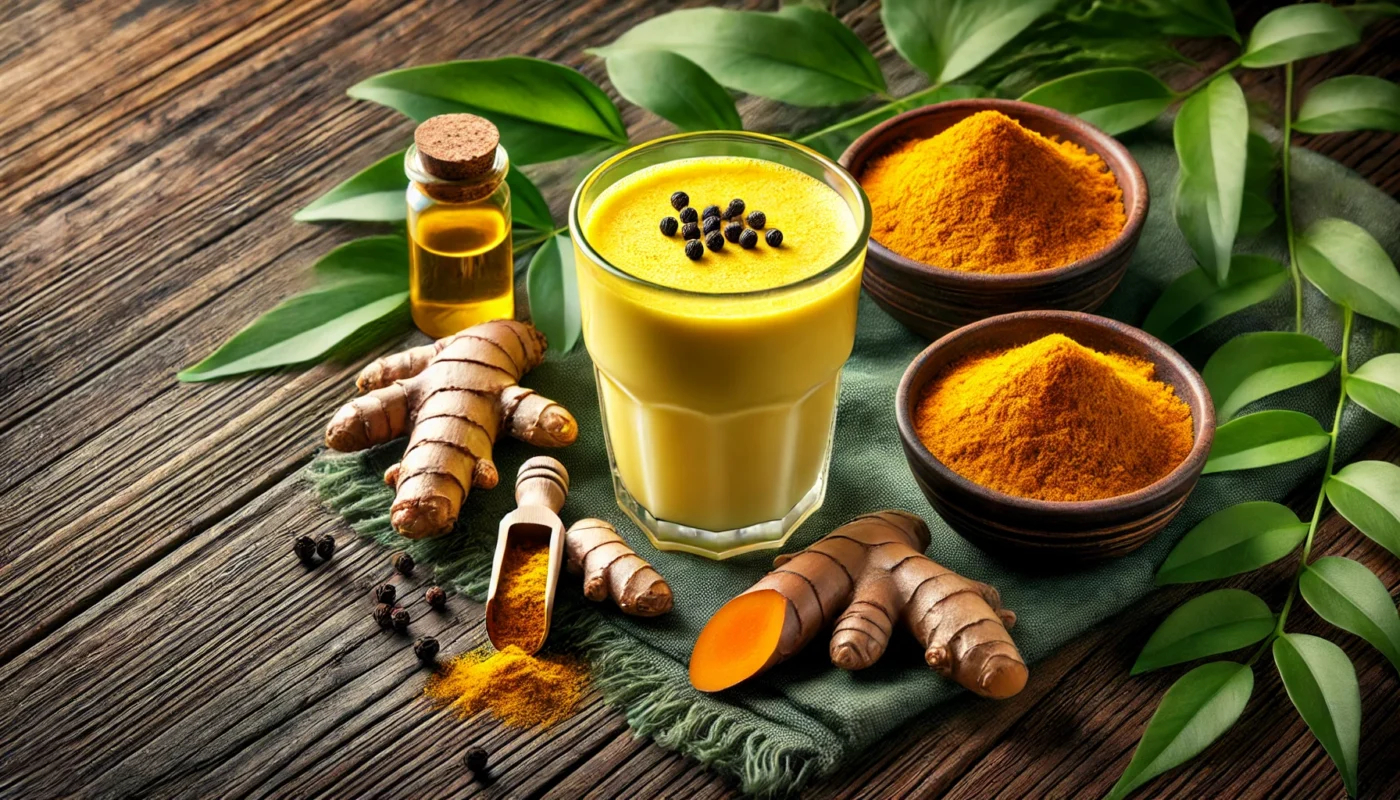Before diving into the spices, it’s crucial to understand what inflammation is. Inflammation is part of the body’s immune response. Initially, it is beneficial, but chronic inflammation can be detrimental to your health. Factors such as stress, lack of exercise, and poor diet can contribute to chronic inflammation. This is where anti-inflammatory herbs and spices come into play.
The Role of Inflammation in the Body
Inflammation is the body’s natural way of protecting itself against harm. When you experience an injury or infection, your immune system responds by sending increased blood flow to the affected area. This process helps eliminate pathogens and promotes healing. Short-term inflammation is a protective mechanism, vital for maintaining health.
However, when inflammation persists over time, it becomes chronic. Chronic inflammation can result from various factors, including environmental pollutants, prolonged stress, or an imbalanced diet. Unlike acute inflammation, which is beneficial, chronic inflammation can lead to tissue damage and contribute to the development of several diseases.
You may also like: Top Supplements to Speed Up Injury Recovery
Common Triggers of Chronic Inflammation
Several lifestyle factors can trigger chronic inflammation in the body. A diet high in refined sugars, trans fats, and processed foods is a significant contributor. These foods can lead to increased production of inflammatory molecules. Additionally, a sedentary lifestyle, characterized by minimal physical activity, can exacerbate inflammation by promoting obesity and metabolic syndrome.
Stress is another major factor that can trigger inflammation. When stressed, the body releases hormones like cortisol, which, over time, can promote inflammation. Furthermore, inadequate sleep and exposure to pollutants can also contribute to a sustained inflammatory response. It’s essential to identify these triggers to manage and reduce chronic inflammation effectively.
The Importance of Diet in Managing Inflammation
The foods you consume play a critical role in either promoting or reducing inflammation. An anti-inflammatory diet is rich in fruits, vegetables, whole grains, lean proteins, and healthy fats. These foods are packed with antioxidants, vitamins, and minerals that help fight inflammation at the cellular level.
Incorporating anti-inflammatory spices into your diet can further enhance these effects. Spices like turmeric, ginger, and cinnamon contain powerful compounds that work synergistically with other nutrients to reduce inflammation. By prioritizing a balanced diet and including these spices, you can support your body’s natural defenses and maintain overall health.
Turmeric: The Golden Spice
Turmeric, often referred to as the “golden spice,” is renowned for its anti-inflammatory properties. The active compound in turmeric, curcumin, is a powerful anti-inflammatory agent. Studies have shown that curcumin can inhibit multiple molecules known to play major roles in inflammation.
The Science Behind Curcumin’s Effectiveness
Curcumin, the primary active compound in turmeric, has been extensively studied for its health benefits. It works by modulating various signaling pathways in the body, which are responsible for inflammation. Curcumin inhibits the activity of enzymes like COX-2 and molecules like NF-kB, both of which play crucial roles in the inflammatory process.
Beyond its anti-inflammatory capabilities, curcumin is also a potent antioxidant. It helps neutralize free radicals, reducing oxidative stress and further preventing inflammation-related damage. Studies suggest that curcumin’s ability to influence multiple biological targets makes it a promising therapeutic agent for various inflammatory conditions.
Incorporating Turmeric into Your Diet
Turmeric is versatile and can be easily added to a variety of dishes. For a savory twist, sprinkle turmeric into soups, stews, and curries. Its earthy flavor complements a wide range of ingredients, enhancing both taste and health benefits. When cooking, combine turmeric with black pepper to boost curcumin absorption, as piperine in black pepper enhances its bioavailability.
For a soothing beverage, prepare golden milk by mixing turmeric with warm milk, a dash of honey, and a pinch of black pepper. This comforting drink not only helps reduce inflammation but also promotes relaxation. If incorporating turmeric into meals is challenging, consider taking curcumin supplements, which are available in capsule form.
Creative Ways to Use Turmeric
Turmeric isn’t limited to traditional recipes. Get creative by adding it to smoothies, where its slight bitterness pairs well with sweet fruits like mango and pineapple. For a unique twist, use turmeric in homemade salad dressings or sprinkle it on roasted vegetables for an added health boost. Turmeric can even be used in baking, adding a warm hue and subtle flavor to muffins and bread.
Explore different cuisines to discover new ways to incorporate turmeric into your meals. Indian, Middle Eastern, and Southeast Asian dishes often feature turmeric as a staple ingredient, offering a wealth of inspiration. By experimenting with various recipes, you can enjoy turmeric’s anti-inflammatory benefits in diverse and delicious ways.

Ginger: A Zesty Root with Powerful Benefits
Ginger is another spice with strong anti-inflammatory effects, largely due to its active components, gingerols. Research suggests that ginger can be as effective as non-steroidal anti-inflammatory drugs (NSAIDs) in reducing pain and inflammation.
Ginger’s Role in Reducing Inflammation
Ginger contains several bioactive compounds, with gingerols being the most prominent. These compounds have been shown to suppress the production of pro-inflammatory cytokines, molecules that promote inflammation in the body. By inhibiting these cytokines, ginger helps reduce inflammation and alleviate associated symptoms.
In addition to its anti-inflammatory properties, ginger is also known for its analgesic effects. It can help relieve pain, making it particularly beneficial for individuals with arthritis or muscle soreness. Regular consumption of ginger can lead to significant reductions in pain and improved joint function.
Delicious Ways to Add Ginger to Your Diet
Ginger is a versatile spice that can be used in both sweet and savory dishes. Start your day with a comforting cup of ginger tea by steeping fresh ginger slices in hot water. This warming beverage not only soothes the digestive system but also provides a gentle anti-inflammatory effect.
Incorporate ginger into your cooking by adding it to stir-fries, marinades, and sauces. Its zesty flavor complements a variety of ingredients, from vegetables to proteins. For a refreshing twist, blend fresh ginger into smoothies, where it pairs well with fruits like banana and berries.
Exploring the Culinary Uses of Ginger
Beyond traditional recipes, ginger can be used in innovative ways to enhance your meals. Grate fresh ginger into salad dressings for a tangy kick or mix it into yogurt for a flavorful snack. Ginger can also be used in baking, adding a spicy warmth to cookies and cakes.
For a unique treat, try pickled ginger, often served with sushi. Its sharp taste and vibrant color make it a delightful addition to salads and sandwiches. By experimenting with different culinary techniques, you can enjoy ginger’s anti-inflammatory benefits in a variety of delicious and creative dishes.
Cinnamon: More Than Just a Sweet Treat
Cinnamon is not just for desserts. It contains cinnamaldehyde, which has been shown to reduce inflammation and has antioxidant properties. Cinnamon can help lower the risk of disease by improving insulin sensitivity and lowering blood sugar levels.
The Health Benefits of Cinnamaldehyde
Cinnamaldehyde, the main active compound in cinnamon, is responsible for its anti-inflammatory effects. It works by inhibiting the production of pro-inflammatory molecules and increasing the activity of antioxidant enzymes. This dual action helps reduce inflammation and protect cells from oxidative damage.
In addition to its anti-inflammatory properties, cinnamon has been shown to improve metabolic health. It enhances insulin sensitivity, helping regulate blood sugar levels and reducing the risk of type 2 diabetes. Regular consumption of cinnamon can support overall health and reduce the risk of chronic diseases.
Simple Ways to Use Cinnamon Daily
Cinnamon is a versatile spice that can be easily incorporated into your daily routine. Sprinkle it on oatmeal, yogurt, or smoothies for a sweet and spicy flavor. Its warm aroma and taste make it a perfect addition to breakfast dishes, providing a comforting start to your day.
In baking, cinnamon can be used in a variety of recipes, from bread and muffins to cookies and cakes. Its natural sweetness allows you to reduce added sugars, making your treats healthier. For a savory twist, use cinnamon in spice rubs for meats or add it to stews and soups.
Expanding Your Culinary Horizons with Cinnamon
Explore the diverse culinary uses of cinnamon by experimenting with different cuisines. In Middle Eastern dishes, cinnamon is often used in savory recipes, adding depth and warmth to pilafs and tagines. In Mexican cuisine, cinnamon is a key ingredient in mole sauce, providing a unique flavor profile.
For an exotic twist, try incorporating cinnamon into beverages like chai tea or mulled wine. Its aromatic qualities enhance the flavors of these drinks, creating a delightful experience. By embracing cinnamon’s versatility, you can enjoy its anti-inflammatory benefits in a wide range of culinary creations.
Garlic: Nature’s Antibiotic
Garlic is a potent anti-inflammatory food. It contains sulfur compounds, such as allicin, which have been shown to reduce inflammation and boost the immune system. Regular consumption of garlic can help lower the risk of heart disease and other inflammation-related conditions.
The Power of Allicin in Reducing Inflammation
Allicin, the active compound in garlic, is responsible for its anti-inflammatory and immune-boosting properties. It works by inhibiting the production of pro-inflammatory cytokines and promoting the activity of immune cells. This dual action helps reduce inflammation and enhance the body’s defenses against infections.
In addition to its anti-inflammatory effects, allicin also has cardiovascular benefits. It helps lower blood pressure and cholesterol levels, reducing the risk of heart disease. Regular consumption of garlic can support heart health and protect against inflammation-related conditions.
Creative Ways to Add Garlic to Your Meals
Garlic is a flavorful and aromatic ingredient that can be used in a variety of dishes. For maximum health benefits, crush or chop garlic and let it sit for a few minutes before cooking. This allows the formation of allicin, enhancing its therapeutic effects.
Incorporate garlic into your cooking by adding it to sauces, dressings, and sautés. Its pungent flavor complements a wide range of ingredients, from vegetables to meats. For a convenient option, consider using garlic powder or granules, which provide a similar flavor profile without the need for fresh garlic.
Exploring Global Flavors with Garlic
Garlic is a staple ingredient in many cuisines around the world. In Italian cooking, it is often used in pasta sauces and bruschetta, adding depth and flavor. In Asian dishes, garlic is a key component in stir-fries and marinades, providing a savory and aromatic touch.
For a unique twist, try using roasted garlic, which has a milder and sweeter flavor. Spread it on bread or mix it into mashed potatoes for a delicious treat. By exploring different culinary traditions, you can enjoy garlic’s anti-inflammatory benefits in a variety of flavorful and exciting dishes.

Cayenne Pepper: Spice Up Your Health
Cayenne pepper contains capsaicin, a compound known to reduce inflammation and pain. Capsaicin works by inhibiting a neuropeptide associated with inflammatory processes.
The Mechanism of Capsaicin in Reducing Pain
Capsaicin, the active compound in cayenne pepper, works by desensitizing sensory neurons and reducing the production of substance P, a neuropeptide associated with pain and inflammation. This action helps alleviate pain and reduce inflammation, making cayenne pepper a valuable addition to an anti-inflammatory diet.
In addition to its pain-relieving properties, capsaicin has been shown to boost metabolism and promote weight loss. It increases thermogenesis, the process by which the body burns calories, helping support healthy weight management. Regular consumption of cayenne pepper can enhance overall health and well-being.
Incorporating Cayenne Pepper into Your Diet
Cayenne pepper is a versatile spice that can be used in a variety of dishes. For a spicy kick, add it to spice rubs for meats or roasted vegetables. Its fiery flavor enhances the taste of these dishes while providing anti-inflammatory benefits.
Incorporate cayenne pepper into sauces and marinades for an extra kick. Its heat pairs well with tangy and sweet flavors, creating a balanced and flavorful experience. For a unique twist, add a pinch of cayenne pepper to smoothies or juices, where it can provide a metabolism boost and enhance the drink’s flavor profile.
Exploring the Culinary Uses of Cayenne Pepper
Cayenne pepper is a staple ingredient in many cuisines, from Mexican to Indian. In Mexican dishes, it is often used in salsas and chili, providing a bold and spicy flavor. In Indian cuisine, cayenne pepper is a key component in curries and spice blends, adding depth and heat.
For a unique culinary experience, try making your own hot sauce using cayenne pepper. Combine it with vinegar, garlic, and other spices for a homemade condiment that can be used in a variety of dishes. By experimenting with different recipes, you can enjoy cayenne pepper’s anti-inflammatory benefits in diverse and exciting ways.
Black Pepper: The Enhancer
Black pepper might not be the first spice that comes to mind for fighting inflammation, but it plays a crucial role. Piperine, the active compound in black pepper, enhances the bioavailability of curcumin, making turmeric even more effective.
The Synergistic Effects of Piperine
Piperine, found in black pepper, is known for its ability to enhance the absorption of various nutrients, including curcumin from turmeric. It works by inhibiting enzymes that metabolize curcumin, allowing more of it to enter the bloodstream. This synergistic effect makes black pepper an essential companion to turmeric in fighting inflammation.
In addition to its role in enhancing nutrient absorption, piperine also possesses its own anti-inflammatory properties. It has been shown to reduce the production of pro-inflammatory cytokines, further supporting the body’s natural defenses against inflammation. By including black pepper in your diet, you can maximize the benefits of other anti-inflammatory spices.
Practical Ways to Use Black Pepper
Black pepper is a versatile spice that can be used in a wide range of dishes. Use it liberally in savory recipes to enhance both flavor and health benefits. Its bold and pungent taste pairs well with a variety of ingredients, from vegetables to meats.
When cooking with turmeric, always pair it with black pepper to boost curcumin absorption. This combination is particularly effective in dishes like curries and stews, where the flavors blend harmoniously. For a unique twist, try adding black pepper to sweet dishes like fruit salads or desserts, where it can provide a subtle and unexpected kick.
Exploring Global Cuisines with Black Pepper
Black pepper is a staple ingredient in cuisines around the world, from Italian to Chinese. In Italian dishes, it is often used in pasta sauces and soups, adding depth and warmth. In Chinese cuisine, black pepper is a key component in stir-fries and marinades, providing a bold and aromatic flavor.
For a unique culinary experience, try using black pepper in homemade spice blends or rubs. Combine it with other spices like cumin, coriander, and paprika for a versatile seasoning that can be used in a variety of dishes. By exploring different culinary traditions, you can enjoy black pepper’s anti-inflammatory benefits in diverse and delicious ways.

Practical Tips for Incorporating Anti-Inflammatory Spices
Integrating anti-inflammatory spices into your diet is a simple and effective way to support your health. Here are some practical tips to help you get started.
Creating a Balanced Diet with Spices
A balanced diet is essential for managing inflammation and promoting overall health. Focus on incorporating whole foods like fruits, vegetables, whole grains, and lean proteins into your meals. Use anti-inflammatory spices to enhance the flavors of these foods, making them more enjoyable and nutritious.
Experiment with different spice combinations to create unique and flavorful dishes. Don’t be afraid to try new recipes and explore various cuisines. By diversifying your diet, you can enjoy a wide range of nutrients and health benefits.
Making Consistency a Priority
Consistency is key when it comes to reaping the benefits of anti-inflammatory spices. Regular consumption is essential for achieving long-term health improvements. Aim to include these spices in your meals daily, whether through cooking, beverages, or supplements.
To make it easier, keep your pantry stocked with a variety of spices and experiment with new recipes regularly. Set a goal to try a new spice or dish each week, gradually building a repertoire of anti-inflammatory meals that you enjoy.
Seeking Guidance from Healthcare Professionals
Before starting any new supplement or dietary regimen, it’s essential to consult with a healthcare provider, especially if you have underlying health conditions. They can provide personalized recommendations and ensure that the spices you choose are safe and effective for your specific needs.
Your healthcare provider can also help you determine the appropriate dosages and forms of spices to use, whether fresh, dried, or in supplement form. By seeking professional guidance, you can make informed decisions and maximize the health benefits of anti-inflammatory spices.
Conclusion
Incorporating anti-inflammatory herbs and spices into your diet is a delicious and natural way to combat inflammation. From the golden hues of turmeric to the zesty kick of ginger, these spices offer a range of health benefits that go beyond flavor. By understanding how these spices work and making them a regular part of your diet, you can take proactive steps towards reducing inflammation and improving your overall health.
Remember, while spices can help manage inflammation, they should be part of a holistic approach that includes a healthy diet, regular exercise, and stress management. Armed with this knowledge, you can now spice up your health journey naturally and effectively.
Embracing a Holistic Lifestyle
Reducing inflammation is not just about diet; it’s about adopting a holistic lifestyle. Regular exercise, stress management, and adequate sleep are all crucial components of a healthy routine. By prioritizing these aspects of your life, you can enhance the effects of anti-inflammatory spices and support your overall well-being.
Consider incorporating mindfulness practices like yoga or meditation into your daily routine to help manage stress. These activities promote relaxation and can reduce the production of stress hormones that contribute to inflammation. By embracing a holistic lifestyle, you can achieve a balanced and healthful life.
Continuing Your Health Journey
Your journey to better health doesn’t stop with spices. Continue exploring new ways to support your well-being, whether through nutrition, fitness, or other wellness practices. Stay informed about the latest research and trends in health and wellness, and be open to trying new approaches that align with your goals.
By staying proactive and committed to your health journey, you can enjoy a vibrant and fulfilling life. Use the knowledge and tools you’ve gained to make informed decisions and create a lifestyle that supports your long-term health and happiness.
Further Reading:
5 Spices with Healthy Benefits
The Top 6 Anti-Inflammatory Spices to Incorporate into Your Diet
The Best Herbs For Inflammation To Improve Your Health
cayenne pepper, black pepper, anti-inflammatory spices, health benefits, culinary uses, turmeric, piperine, holistic lifestyle, nutrition, wellness, recipes, inflammation management, global cuisines, spice blends, healthy eating
Important Note: The information contained in this article is for general informational purposes only, and should not be construed as health or medical advice, nor is it intended to diagnose, prevent, treat, or cure any disease or health condition. Before embarking on any diet, fitness regimen, or program of nutritional supplementation, it is advisable to consult your healthcare professional in order to determine its safety and probable efficacy in terms of your individual state of health.
Regarding Nutritional Supplements Or Other Non-Prescription Health Products: If any nutritional supplements or other non-prescription health products are mentioned in the foregoing article, any claims or statements made about them have not been evaluated by the U.S. Food and Drug Administration, and such nutritional supplements or other health products are not intended to diagnose, treat, cure, or prevent any disease.

